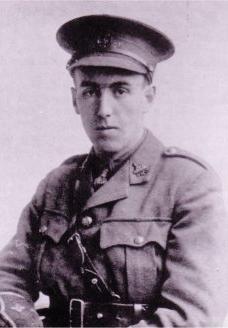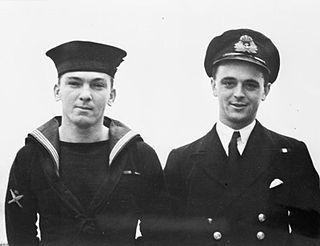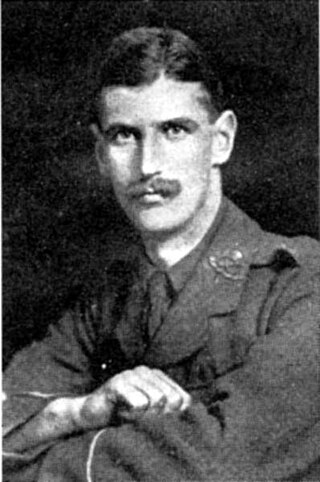Related Research Articles

Angus Buchanan, was an English recipient of the Victoria Cross, the highest and most prestigious award for gallantry in the face of the enemy that can be awarded to British and Commonwealth forces.

James Joseph Magennis, VC was a Belfast-born sailor and recipient of the Victoria Cross, the highest award for gallantry in the face of the enemy that can be awarded to British and Commonwealth forces. He was the only native of Northern Ireland to receive the Victoria Cross in the Second World War.

John Leslie Green VC was an English recipient of the Victoria Cross, the highest and most prestigious award for gallantry in the face of the enemy that can be awarded to British and Commonwealth forces. An officer in the Royal Army Medical Corps, he served on attachment to The Sherwood Foresters during the First World War. He was posthumously awarded the VC for his actions on 1 July 1916, during the Battle of the Somme.

The 78th Infantry Division, also known as the Battleaxe Division, was an infantry division of the British Army, raised during the Second World War that fought, with great distinction, in Tunisia, Sicily and Italy from late 1942–1945.
The Victoria Cross for New Zealand (VC) is a military decoration awarded for valour or gallantry in the presence of the enemy to members of the New Zealand Armed Forces. It may be awarded to a person of any rank in any service and civilians under military command, and is presented to the recipient by the Governor-General of New Zealand during an investiture held at Government House, Wellington. As the highest award for gallantry in New Zealand it takes precedence over all other postnominals and medals.

The Victoria Cross (VC) is the highest and most prestigious award of the British honours system. It is awarded for valour "in the presence of the enemy" to members of the British Armed Forces and may be awarded posthumously. It was previously awarded by countries of the Commonwealth of Nations, most of which have established their own honours systems and no longer recommend British honours. It may be awarded to a person of any military rank in any service and to civilians under military command. No civilian has received the award since 1879. Since the first awards were presented by Queen Victoria in 1857, two-thirds of all awards have been personally presented by the British monarch. The investitures are usually held at Buckingham Palace.
References
- 1st Division (1944). History of the First Division: Anzio Campaign, January–June 1944. Jerusalem, Palestine: "Ahva" Printing Press. OCLC 1281661223.
- 1st Division (1946). History of the First Division: Florence to Monte Grande, August 1944–January 1945. Cairo, Egypt: Schindler's Press. OCLC 1281660791.
- Ashcroft, Michael (2006). Victoria Cross Heroes . London: Headline Book Publishing. ISBN 978-0-75531-632-8.
- Ellis, Lionel F. (1954). Butler, J. R. M. (ed.). The War in France and Flanders 1939–1940. History of the Second World War, United Kingdom Military Series. London: Her Majesty's Stationery Office. OCLC 1087882503.
- Playfair, I. S. O.; et al. (2004) [1966]. Butler, J. R. M. (ed.). The Mediterranean and Middle East: The Destruction of Axis Forces in Africa. History of the Second World War United Kingdom Military Series. Vol. IV. London: Naval & Military Press. ISBN 978-184574-068-9.